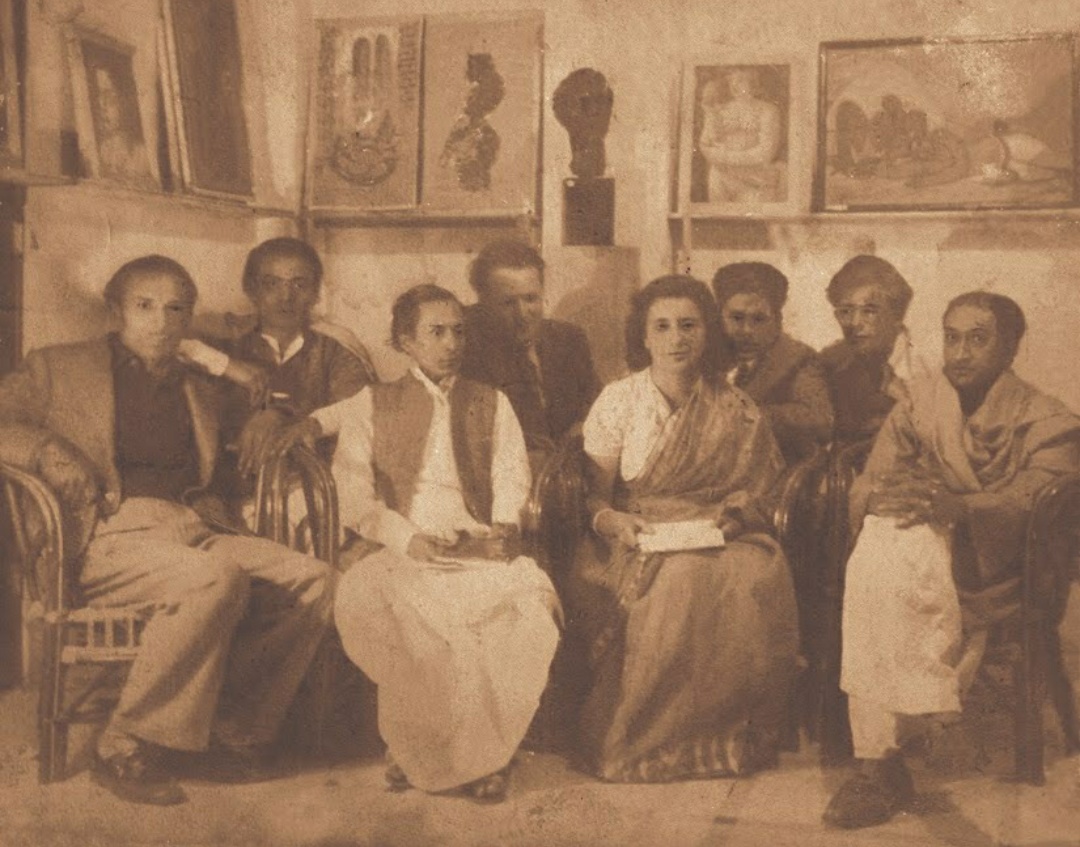Calcutta Group on:
[Wikipedia]
[Google]
[Amazon]
The Calcutta Group was a group of

Article on Calcutta Group
''Hilarious treatment of protagonists'' (exhibition by Paritosh Sen), The Telegraph, 5 May 2006
modern art
Modern art includes artistic work produced during the period extending roughly from the 1860s to the 1970s, and denotes the styles and philosophies of the art produced during that era. The term is usually associated with art in which the tradit ...
ists in India
India, officially the Republic of India, is a country in South Asia. It is the List of countries and dependencies by area, seventh-largest country by area; the List of countries by population (United Nations), most populous country since ...
, formed in 1943 in Kolkata
Kolkata, also known as Calcutta ( its official name until 2001), is the capital and largest city of the Indian state of West Bengal. It lies on the eastern bank of the Hooghly River, west of the border with Bangladesh. It is the primary ...
. It has the distinction of being the first artistic movement of its kind in both Bengal and all of India. Though short-lived – the group disbanded in 1953 – the Calcutta Group was instrumental in the transformation of contemporary Indian art and brought this genre onto the world stage.
Members

Core members (1943)
* Subho Tagore * Nirode Mazumdar * Rathin Maitra * Prankrishna Pal * Gopal Ghosh * Paritosh Sen * Prodosh Dasgupta * Kamala Das GuptaAdditional members
* Abani Sen (1947) * Rathin Mitra (1949) * Gobardhan Ash (1950) * Sunil Madhav Sen (1952) * Hemant Misra (1950)Formation
Rathin Maitra and Subho Tagore initiated the formation of the group in 1943. The group initially included fellow painters Nirode Mazumdar, Prankrishna Pal and Gopal Ghosh. Later that year, another painter, Paritosh Sen, along with sculptors Pradosh Das Gupta, Kamala Das Gupta joined the society. These eight members were known as the organization's core, as well as the driving force behind it. Over the years, other artists joined the group as well including Abani Sen in 1947, Rathin Mitra * in 1949, Gobardhan Ash in 1950, Sunil Madhav Sen in 1952, and Hemanta Mistra in 1953.Philosophy
During this period of time, Bengal - a state in India, home to many of the group's members - had been facing many tragedies including wars, famines, massacres, and even the partition of the country. Stemming from these events, the members of the Calcutta Group focused not on aesthetic, but on the social and political realities of the state and nation at the time. Many of the group's members were actually sympathetic towards the Communist Party that was making its way through India and some were even militants themselves. The group's manifesto was a synthesis of all of these ideas that stressed two main points: renouncement of religion in art and creation of opportunities for Indian art to modernize. The first idea was meant to remove the evils of demagoguery and elitism and produce works that focused on the population as a whole. However, the dismissal of works based n Hindu mythology came across as anti-religious and even atheist and therefore shocked many, leading to the moniker "Artistic Scandal".Sources
* Partha Mitter, ''Indian Art (Oxford History of Art)'', Oxford University Press (2001), - page 193 * Krishna Dutta, ''Calcutta: A Cultural and Literary History (Cities of the Imagination)'', Interlink (2003), - page 233 * Nercam Nicolas, "Le clan des Tagore, de l'École du Bengale au Groupe de Calcutta" ''Arts asiatiques (''tome 60, 2005) - page 16 * Rebecca M. Brown, ''Art For a Modern India, 1947-1980'', Duke University Press (2009), - page 14External links
Article on Calcutta Group
''Hilarious treatment of protagonists'' (exhibition by Paritosh Sen), The Telegraph, 5 May 2006
See also
* Baroda Group * Bombay Progressive Artists' GroupReferences
{{reflist Indian artist groups and collectives 20th century in Kolkata 1940s in India